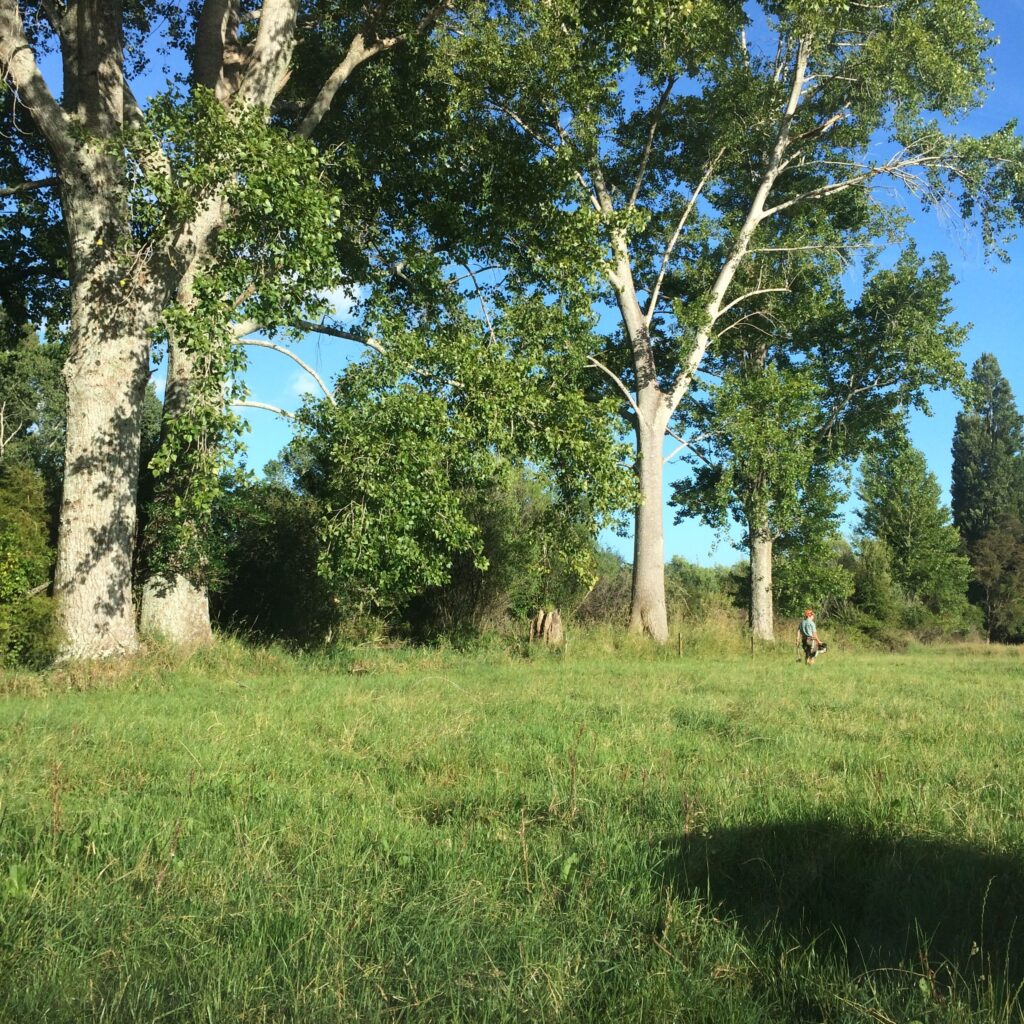My last blog delt with willow and hazel: the woods we use for the rims and handles of our products. This time lets nose around among the poplars.

First, a quick nose around some names. We are talking here of cottonwoods, or quaking aspens, trembling poplar, white poplar, golden aspen, popple, common aspen, on and on until we arrive thankfully at poplus tremula, and move on.
The poplar that becomes the Trug boards and Maund staves is hunted out, felled, and cut into logs by the Trug Maker himself. Then our local miller brings his portable mill onsite and expertly cuts it all to dimension. This sounds easy, but there is a list of cuts in my head that I attempt to project onto the logs so as to make best use of them. It’s all a bit scatter-brained to go into here but gratitude goes to Tim the miller, who has the patience of a saint. There is cake and coffee delivered on site to help him put up with this.


I then take the cut lengths home and fillet stack it to dry. There is a certain Zen involved in this careful stacking to let the air through and keep the structure square and stable as it grows. There is also a certain amount of backache . When dry poplar is wonderfully light but straight off the mill it is like railway irons.
Once the stacks are complete, I put old corrugated iron on top and wire the whole lot down to try and stop the timber twisting or bowing too much. Then there is a long wait while the timber seasons – about six months for poplar; much more for the likes of oak or walnut. As with drying firewood or haymaking, there is a low-level stress that goes hand in hand with the seasoning process: is it dry enough? Have I stacked it right? Is it getting enough air, or is it drying too quickly and set to crack and warp, etcetera etcetera…until the stacks are dismantled and re stacked in the ‘Timber Shed’ – a former single car garage that has the space portal qualities of Dr Who’s Tardis. Then I can breathe a little easier.
From here the lengths are cut down into trug boards or Maund staves and the steaming and bending begins. It is only at this stage that I really find out whether I chose wisely when months before I was out on the riverbank selecting my tree. Unseen twist or tension can make the finished boards difficult to impossible to bend. Luckily for any ‘reject’ wood can usually be repurposed as milking stools, Maund bases, Roger’s stools or tool trugs, so not all is lost.
The poplar I am using now came from the river bank a couple of kms from my workshop. Nearby is a stump from a tree felled years ago by Brett, who taught me trug craft. There are several tall, straight leaders growing from the stump, coppicing well, giving shade for the cattle, company for the river and perhaps trug wood in years to come. Another reason why we love what we do.